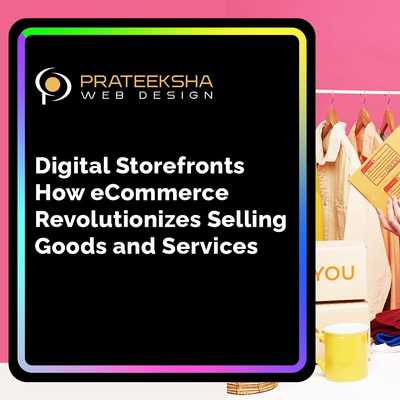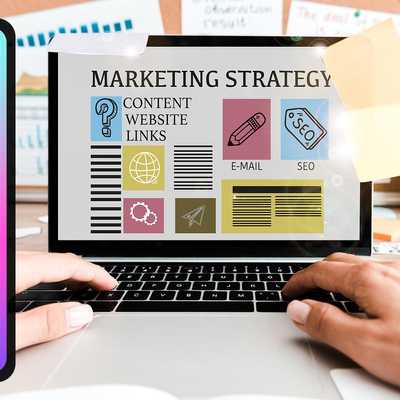By 2020, it is predicted that the eCommerce industry will have grown from more than $2 trillion to more than $4 trillion in revenue. E-commerce looks to have a promising future. On the other hand, figuring out how to launch an ecommerce business might be a difficult task. Many processes and choices must be completed at the appropriate time, which requires a significant amount of effort.
To assist you in getting started, a complete plan on how to launch an online business has been compiled from the best Shopify content available. The information available on this page will assist you through the many phases of establishing, operating, and growing a successful ecommerce business.
What Do You Need to Know to Start, Launch, and Grow a Successful Online Store?
1) New Product Development
This is the next phase in the process of how to start your own internet business: once you've identified your product and assessed its potential, you'll need to find a supplier to help you get it up and running. If you want to distinguish yourself from your competition, you must first have a thorough awareness of who they are and what they do. A business plan will be required to assist you in getting started with your own ecommerce company. When it comes to organizing and synthesizing your thoughts and ideas, a company strategy serves as a road map. A business plan is required to avoid making frequent mistakes and effectively attract new customers. Once you've identified a product to sell on the internet, the next challenging step is to develop a name for your firm to go along with the product. Because a company's name acts as its brand identity, it should express as much information as possible about the company and its goods in a single glance.
2) Business Name, Logo and Domain name
Maintaining a distinct identity in today's competitive business begins with selecting an evocative name that immediately draws attention to the brand. You want your company's name to be as short and plain as possible so that clients can remember and pronounce it at any moment without difficulty. If you want to sell your items on the internet, you'll need a domain name to go with your business. If you want to achieve this, you'll need to register your domain name, but first, make sure that the domain name you're interested in doesn't already exist by performing a search. Once you've decided on a business name and registered a domain name, the logo you create will serve as the company's public face, representing your organization. The logo should be kept to a bare minimum at all times, and the Logo Design should be one-of-a-kind in nature. Additionally, the logo should be adaptable and easily recognised by the audience.
3) Product Description and Images
Following creating a logo for your company, you will need to create your shop, consider how it will seem on your website, and photograph your merchandise and store to do this. When it comes to taking product shots, you might not be the most qualified person for the position, and you may need to hire a professional photographer to have a better photoshoot. What do you think: Is it a good idea to photograph your products from every angle imaginable, including the front, rear, and diagonal? Because your only salesperson in the online market is a well-chosen photograph of yourself. Product descriptions should be written so that they thoroughly explain the product. A team of expert writers may be the best option if you want a better and more precise way to express yourself.
4) Selecting the right Ecommerce Online Platform
An ecommerce platform, which both small and large businesses can use, may help you manage your website, marketing, sales, and operations more efficiently. Consider it to be the nerve centre or headquarters of your organization. Determine which e-commerce platform is most appropriate for your company's requirements. The results of your research are in, and it is now time to choose an e-commerce platform, set up your store, and begin managing your new business. There are two particular types of platforms.
- Self-hosted platforms that are based on open-source software It's pretty similar to traditional platforms, with the critical difference being that you don't have to pay a price upfront to utilize the service. Even if the initial development is free, all further enhancements and implementation and migration aren't included. Magento, an open-source eCommerce platform, is one such example, and Woocommerce is another platform.
- Platforms that offer software as a service are becoming increasingly popular (SaaS) Startups are increasingly relying on cloud-based software solutions such as Shopify and BigCommerce to launch their online stores. Of course, this includes business-to-business (B2B) organizations.
Why SaaS-based solutions are the most excellent option for businesses.
Large e-commerce platforms, such as Shopify and BigCommerce, give a complete set of tools and features for running a business, allowing businesses to simplify their operations and operate in the manner that they see suitable. Start-up is simple, there is no need for costly development or technical problems, and the framework is designed to grow with your business. When looking for an eCommerce platform, you need to consider more than simply the creation and operation of the platform.
1. Vendor Expertise
If the service provider cannot demonstrate that they can satisfy your demands and overcome your obstacles, they should be avoided. Examine whether or not they have previous experience in your field to guarantee that they are competent. Check out client testimonials, discussion forums, and case studies to ensure that the provider can handle more than just development.
2. Security.
The most crucial issue to take into consideration is safety. It is essential to ensure that your eCommerce provider has implemented the necessary security measures because eCommerce is an online marketplace that actively accepts financial transactions.
3. Support
What happens if anything goes wrong, and believe us when we say that something will go wrong at some point? Will the vendor provide you with the help you require to resolve the issue? Keep an eye out for businesses that provide emergency assistance 24 hours a day, seven days a week by email, webchat, and phone, among other modes of communication.
4. SEO-friendliness
When your eCommerce platform comes with built-in SEO features, you'll be able to achieve high search engine rankings more quickly and efficiently. When looking for an e-commerce platform that is SEO-friendly, the following factors should be taken into consideration:
- - Include a blog as part of your online store's content strategy.- Having your website address is a plus.- Making it feasible for customers to provide feedback is essential.- Compatibility with mobile devices- A mobile-friendly platform is essential.- Scalability and Features
Then look into the shipping firms in your area with a solid reputation and compare them. The fact that clients may arrive from any country area makes it imperative that you collaborate with an outsourced shipping partner with a countrywide presence. #### 6. Pre-Launch Preparations It's the ideal time to launch your product because your logo, domain name, and photoshoot are all completed. It's time to get out of here! Your store's official launch has now been completed. When it comes to ecommerce, first impressions count for a lot more than anything else. Look for inadequacies in the industry's supply chain and distribution. With targeted research, it is possible to uncover unmet client demands even in well-known product sectors. Look at the following items to identify market insufficiencies. Investigate your target audience's concerns, complaints, and recommendations on social media. Google Trends allows you to compare and contrast the number of searches for different product types over time by utilizing the Google Trends tool.
Check out some of the most popular items on Amazon and eBay, and see what other people say about them. #### 7. Digital Marketing We are now faced with the problem of making our first sale of our product, which is quite exciting. To do this, you need to spread your advertising budget into Online Advertising, Social Media Marketing, Search Engine Optimization, and Email Marketing. You may employ Google Ad words to increase the speed with which your product is sold. We all now rely on Google for everything, no matter how insignificant the task. It has become an essential marketing tool for firms as a result. If you haven't already done so, get your Social Media accounts in order. Using social media to generate visits and a high number of purchases is essential for any online business looking to expand. Those who wish to create their own Facebook store can use a subscription service. Because of your Facebook business page, the greater the number of individuals connected to you and your business, the more likely they will tell their friends and family about your store. You may even join various Facebook groups to establish your online presence and sell your company's products and services. Email is a crucial marketing tool since it can be used to contact many people in a short period. If you decide to go down this road, you may hire specialists in the industry to help you with your project. When you have a vast database, it may be beneficial. Email marketing is carried out by sending many emails to their database. The primary distinction between SMS and email marketing is that text messages are delivered to individuals rather than emails. #### 8. Tracking Your Customers Utilizing web analytics makes it possible to track your customers' activity on your website, such as how long they spent on your site and which page they left. It is critical to take these remarks carefully since they might impact sales. The establishment of a business is the next and most critical stage. This might encompass a range of tasks such as naming your business, designing and logo, or developing a catchphrase for your company. Each one will be subjected to a comprehensive examination.



